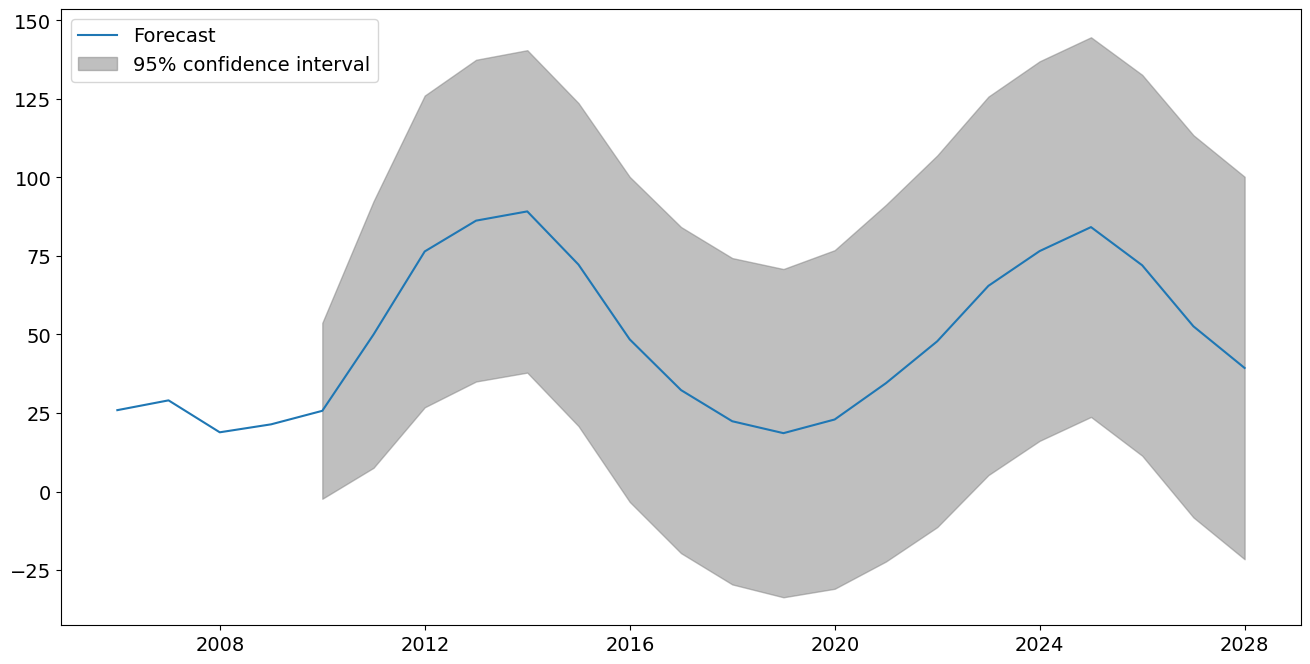Dates in timeseries models¶
[1]:
import pandas as pd
import matplotlib.pyplot as plt
import statsmodels.api as sm
from statsmodels.tsa.ar_model import AutoReg, ar_select_order
plt.rc("figure", figsize=(16, 8))
plt.rc("font", size=14)
Getting started¶
[2]:
data = sm.datasets.sunspots.load()
Right now an annual date series must be datetimes at the end of the year.
[3]:
from datetime import datetime
dates = pd.date_range("1700-1-1", periods=len(data.endog), freq="YE-DEC")
Using Pandas¶
Make a pandas TimeSeries or DataFrame
[4]:
data.endog.index = dates
endog = data.endog
endog
[4]:
1700-12-31 5.0
1701-12-31 11.0
1702-12-31 16.0
1703-12-31 23.0
1704-12-31 36.0
...
2004-12-31 40.4
2005-12-31 29.8
2006-12-31 15.2
2007-12-31 7.5
2008-12-31 2.9
Freq: YE-DEC, Name: SUNACTIVITY, Length: 309, dtype: float64
Instantiate the model
[5]:
selection_res = ar_select_order(endog, 9, old_names=False, seasonal=True, period=11)
pandas_ar_res = selection_res.model.fit()
Out-of-sample prediction
[6]:
pred = pandas_ar_res.predict(start="2005", end="2027")
print(pred)
2005-12-31 25.907501
2006-12-31 29.024373
2007-12-31 18.855729
2008-12-31 21.392012
2009-12-31 25.695092
2010-12-31 49.981886
2011-12-31 76.437566
2012-12-31 86.244709
2013-12-31 89.184663
2014-12-31 72.251362
2015-12-31 48.447259
2016-12-31 32.292122
2017-12-31 22.374099
2018-12-31 18.581657
2019-12-31 22.935657
2020-12-31 34.513168
2021-12-31 47.828469
2022-12-31 65.487766
2023-12-31 76.551575
2024-12-31 84.185043
2025-12-31 72.029019
2026-12-31 52.603134
2027-12-31 39.330875
Freq: YE-DEC, dtype: float64
[7]:
fig = pandas_ar_res.plot_predict(start="2005", end="2027")

Last update:
Oct 03, 2024